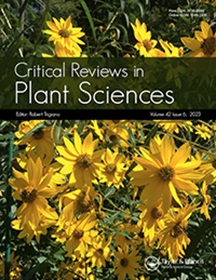PHT1家族转运蛋白在植物磷的获取和再分配中的作用
IF 4.9
2区 生物学
Q1 PLANT SCIENCES
引用次数: 53
摘要
摘要磷是影响植物生长和产量的重要常量营养素之一。土壤中无机磷(Pi)的低有效性大大限制了作物生产,而过量施肥会导致经济和生态问题。全球磷酸岩储量的快速枯竭需要有效的工厂Pi管理。为了应对低Pi(LP)胁迫,植物已经进化出形态、生理、分子和生化适应。除了丛枝菌根真菌(AMF)介导的Pi获取、吸收外,Pi的输出、利用和再活化还取决于膜结合的磷酸转运蛋白(PHTs)所介导的转运过程,PHTs可分为五个家族。其中,PHT1家族是参与从土壤中获取Pi并在植物内重新分布的主要转运蛋白。在这篇综述中,我们简要介绍了5个PHT(PHT1到PHT5),并重点介绍了PHT1。我们详细介绍了迄今为止在各种植物中鉴定和表征的PHT1,包括它们的系统发育关系、AMF诱导、定位和亲和力。我们还讨论了对PHT1在转录、转录后和翻译后水平调控的现有理解。PHT1的进一步开发将有助于克服与LP土壤相关的问题,并有助于通过可持续农业提高作物产量。本文章由计算机程序翻译,如有差异,请以英文原文为准。
The Role of PHT1 Family Transporters in the Acquisition and Redistribution of Phosphorus in Plants
Abstract Phosphorus (P) is one of the most important macronutrients for plant growth and yield. Low availability of inorganic phosphate (Pi) in soil substantially curbs crop production, whereas excessive Pi fertilization causes economic and ecological problems. The rapid depletion of global rock phosphate (RP) reserves calls for efficient plant Pi-management. To cope with low Pi (LP) stress, plants have evolved morphological, physiological, molecular, and biochemical adaptations. Apart from arbuscular mycorrhizal fungi (AMF)-mediated Pi acquisition, Pi uptake, it's export, utilization, and remobilization depend on transport processes mediated by membrane bound PHosphate Transporters (PHTs), which are grouped into five families. Among these, the PHT1 family is the primary transporter involved in the acquisition of Pi from soil and redistribution within plants. In this review, we present a brief account on 5 PHTs (PHT1 to PHT5) and focus on PHT1s. We cover in detail the PHT1s identified and characterized until now in various plants including their phylogenetic relationships, induction by AMF, localization, and affinity. We also discuss the extant understanding of the regulation of PHT1s at transcriptional, post-transcriptional, and post-translational levels. Further exploitation of PHT1s will help overcome the problems associated with LP soils and assist in improving crop yields through sustainable agriculture.
求助全文
通过发布文献求助,成功后即可免费获取论文全文。
去求助
来源期刊
CiteScore
12.90
自引率
1.40%
发文量
15
审稿时长
>12 weeks
期刊介绍:
Critical Reviews in Plant Sciences focuses on presenting in-depth and up-to-date reviews of timely and/or cutting-edge subjects in the broad discipline of plant science, ranging from molecular biology/biochemistry through the areas of cell biology, plant pathology and physiology, genetics, classical botany, and ecology, to practical agricultural applications. Articles in the journal provide an up-to-date literature base for researchers and students, pointing the way towards future research needs. The journal is also a significant source of credible, objective information to aid decision makers at all levels.

 求助内容:
求助内容: 应助结果提醒方式:
应助结果提醒方式:


